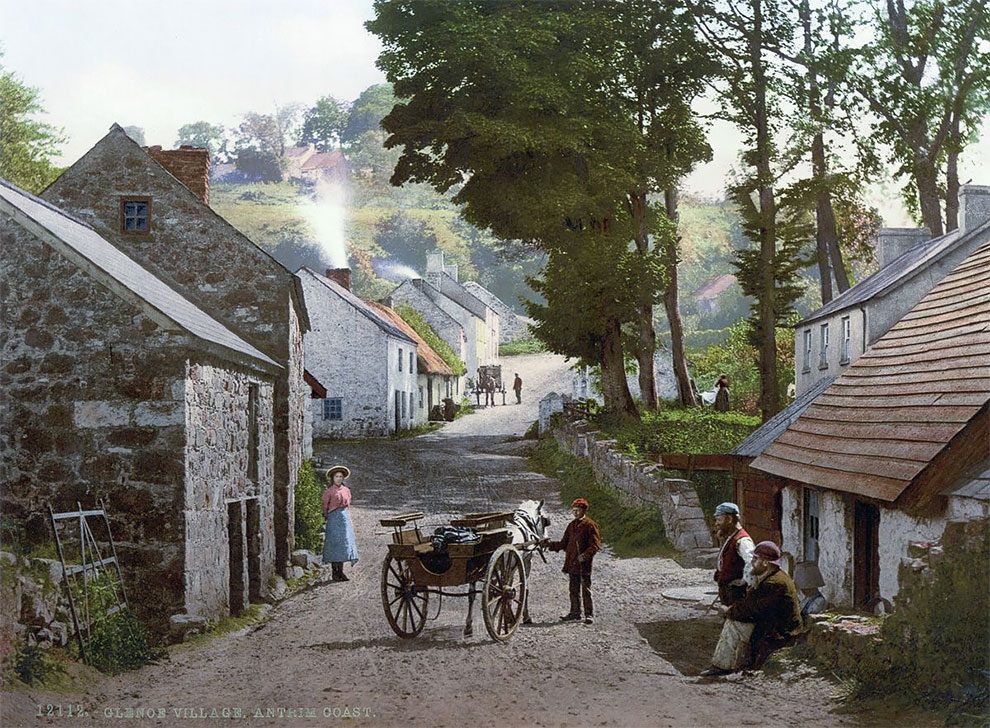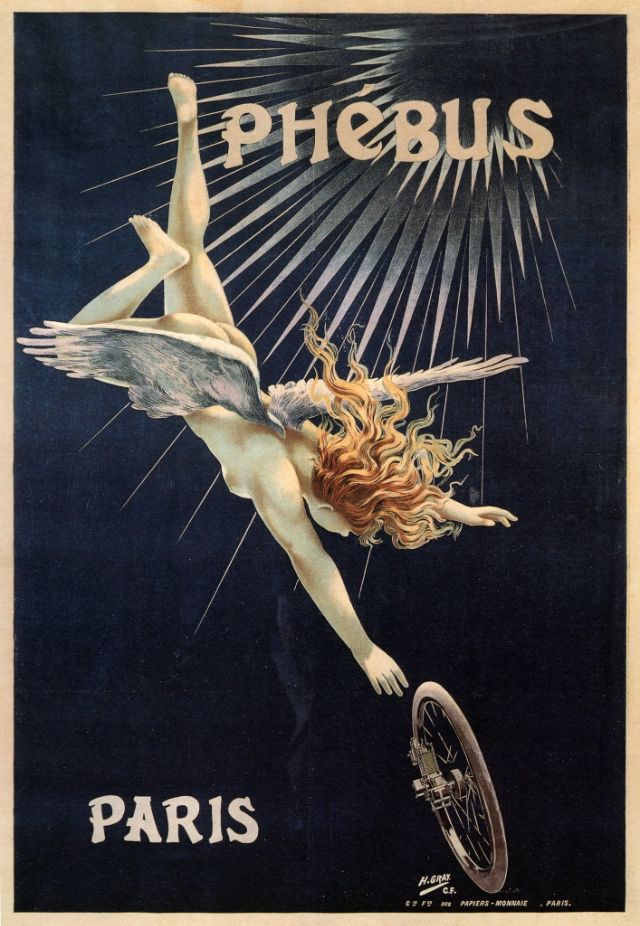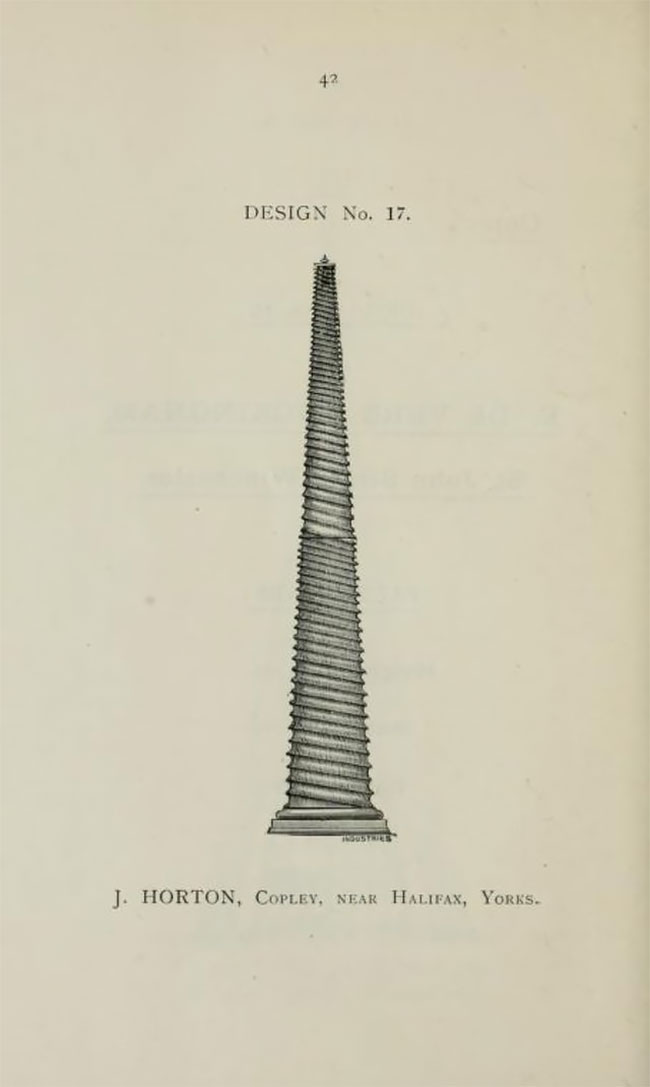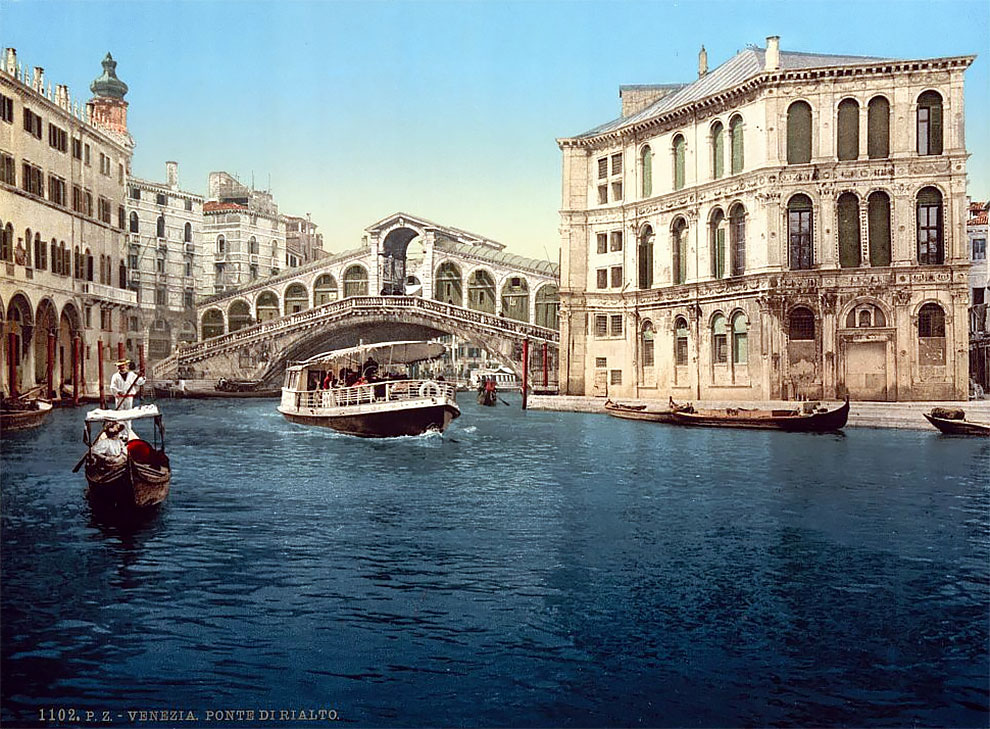Vinatge Occultist Calendar with Incredible Illustrations by Manuel Orazi
An occultist calendar with illustrations by Manuel Orazi, commemorating magic for the upcoming year of 1896, was printed in a symbolic edition of 777 copies. Continue reading »
Art on Wheels: Exploring the Captivating World of 1890s French Bicycle Posters
Throughout history, bicycles have played a significant role in shaping transportation and inspiring a sense of freedom. While the first functioning two-wheeler is often credited to a German inventor in 1817, it was the French who truly embraced and popularized this revolutionary mode of transport in the 1860s, giving it the name “bicycle.” The French not only fell in love with bicycles for their practicality but also recognized their cultural and literary significance, intertwining them with themes of freedom and adventure in their literature. Continue reading »
Amazing Anatomical Photographs from Alec Fraser’s Handbook of Brain Surgery, 1890

Harvey Cushing/John Hay Whitney Medical Library
It is difficult to categorize these photographs as art, since they are educational material. However, they are prepared, preserved, and photographed so carefully and even maniacally that one cannot help but see the whole thing as an art object. The photos were taken for The Handbook of Brain Surgery by surgeon Alec Fraser. Continue reading »
Inside the Bradbury Building, the Oldest Commercial Building in Downtown Los Angeles
The Bradbury Building is an architectural landmark in downtown Los Angeles, California. Built in 1893, the five-story office building is best known for its extraordinary skylit atrium of access walkways, stairs and elevators, and their ornate ironwork. Continue reading »
Amazing Black-and-White Photos of Amsterdam Taken by Dutch Painter George Hendrik Breitner
George Hendrik Breitner (12 September 1857 – 5 June 1923) was a Dutch painter and photographer. An important figure in Amsterdam Impressionism, he is noted especially for his paintings of street scenes and harbors in a realistic style: wooden foundation piles by the harbor, demolition work and construction sites in the old center, horse trams on the Dam, or canals in the rain. Breitner saw himself as “le peintre du peuple”, the people’s painter, and preferred to work with working-class models: laborers, servant girls and people from the lower class districts. Continue reading »
The Future Imagined in Albert Robida’s “La vie électrique,” 1890
Who participated in the first video date? A good couple for candidacy in this regard are Georges Lorris and Estelle Lacombe, who meet via “téléphonoscope” in Albert Robida’s 1890 novel Le Vingtième siècle: la vie électrique in which he imagines “the electric life” of the future. Continue reading »
Amazing Rare Photographs of the Montparnasse Train Wreck in 1895
This extraordinary accident occurred on October 22, 1895 at Montparnasse, then known as Gare de l’Ouest. The drive of the express train from Granville to Paris, hoping to make up time for its 131 passengers, increased the train’s speed and the air brake failed. Continue reading »
How To Recognise Clouds – The International Cloud Atlas, 1896
The Atlas international des Nuages (International Cloud Atlas; Internationaler Wolkenatlas) was published in Paris, France, by Gauthier-Villars et fils in 1896. This pictorial atlas contained 14 illustrations on 14 printed color plates. A mix of photographs (chromotypographs) and pantings, the text was in English, French, and German. Continue reading »
The Spectacular World’s Fair Exposition Universelle in Rare Pictures, 1899
The Eiffel Tower viewed from the Champ du Mars.

AALTO University/Brown University Library Center
The 1889 World Fair in Paris was symbolically important, since the year 1889 marked the hundredth anniversary of the French Revolution, and the Fair was announced as a celebration of the event. It attracted more than thirty-two million visitors. The most famous structure created for the Exposition, and still remaining, is the Eiffel Tower. Continue reading »
These Amazing Vivid Photochromes Depict the Princely County of Tyrol in 1890, a Mountainous Region of The Austro-Hungarian Empire
These amazing postcards depict the Princely County of Tyrol, an mountainous region of the Austro-Hungarian empire. The pictures were created using the Photochrom process, a revolutionary procedure that consists of producing ink-based images through the direct photographic transfer of an original negative onto litho and chromographic printing plates. Continue reading »
An Illustrated Police Equipment Catalogue From 1891
This Catalogue of Bean’s Patent Police Equipments from 1891 features a range of weaponry and apparatus for keeping the peace, enforcing the status quo and cracking the heads of anyone deemed criminally deviant. Produced in Boston by John P. Lovell Arms Co., this is a policeman’s ‘how-to’ guide. Continue reading »
Eugene Atget – The Photographer Who Walked Fin de Siècle Paris
Eugene Atget (1857-1927) wandered the streets of Paris dressed in a large black cloak and floppy hat, his camera slung on its tripod over his shoulder. He drifted until something triggered a response which he stopped to photograph. Continue reading »
In 1898, Revolutionary French Artist Toulouse-Letrec Went To The Toilet On A Beach, His Friend Took These Photographs
In 1898, Maurice Joyant took four photographs of his childhood friend Henri Marie Raymond de Toulouse-Lautrec Montfa, better known Toulouse-Letrec (24 November 1864 – 9 September 1901), defecating on the beach whilst reading Le Petit newspaper. The pictures were sold a postcards. Joyant later founded the Musée Toulouse-Lautrec in Albi, where the painter was born, and added these images to the exhibits. Continue reading »
Beautiful Rare Colorized Photos Of The Russian Village In 1899 By Mikhail Krukovsky
Russian village in the XIX century was about hard labor. “Those that don’t work, don’t work”, as they say. These photos were made by an enthnographer Mikhail Krukovsky in 1899. Modern technologies allowed to make them colorized. Now we can see how a typical Russian village looked like so many years ago. Continue reading »
Riding Giant Mechanical Tricycles In 1896
This giant eight man tricycle was indeed a promotional stunt, used to promote “VIM” tires made by the Boston Woven Hose and Rubber Company, around 1896. Continue reading »
The Astonishing Cinematic Autochrome Photography From The 1890s By Heinrich Kühn
The rise of photography in the mid-late 19th-century began the move away from an oral and literary tradition towards one based on image. A photograph can describe a moment in time more viscerally than the written word. Continue reading »
No One Knows Who Took These Superb Hand-Colored Albumen Prints Of Japan In The 1890s
In the 1850s Japan permitted Western barbarians to trade in its ports for the first time in an age. The weird foreigners were corralled in zones of tolerance, unable to roam freely and kept apart from the Japanese. Continue reading »
Gallery Of 68 Competitive Designs For The Great Tower For London, 1890
The year previous, 1889, saw the hugely successful Eiffel Tower go up in the centre of Paris, and the good people of London, not to be outdone, decided to get one of their own. A wonderful array of designs were put forward. Continue reading »
Beautiful Color Pictures Of Venice From The 1890s
These astonishing images offer a rare brightly-colored glimpse of the beautiful plazas and intricate architecture of Venice in the 19th century. Continue reading »
The World In The 1890s Through 12 Glorious Photos
Photochromes are vibrant and nuanced prints hand-colored from black-and-white negatives. Created using a process pioneered in the 1880s, these images offer a fascinating insight into the world when color photography was still in its infancy.
Photochrome is a method of producing colored images from black-and-white negatives, allowing color pictures to be created before color photography became available. The process was developed in the 1880s by the Swiss chemist Hans Jakob Schmid. Continue reading »
Incredible Hand-Tinted Postcards Capture 1890s Ireland In Vivid Color
These postcards of the sweeping hills, cliffs, and towns of Ireland were created using the Photochrom process, a complex method of imbuing black-and-white photographs with relatively realistic color.
Glenoe Village, County Antrim.

Library Of Congress
The closely-guarded process was invented in the 1880s by an employee of a Swiss printing company. It entailed coating a tablet of lithographic limestone with a light-sensitive emulsion, then exposing it to sunlight under a photo negative. Continue reading »



















